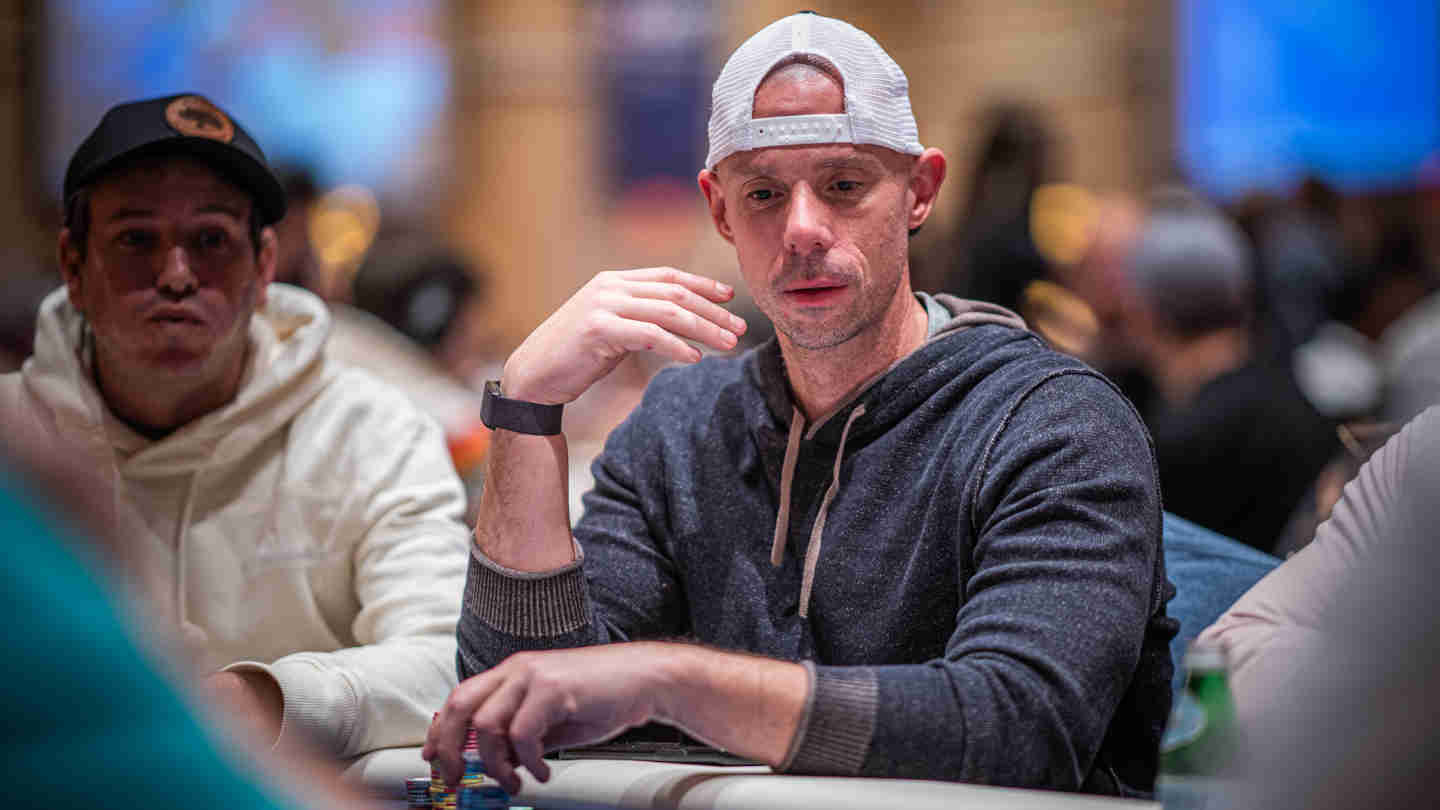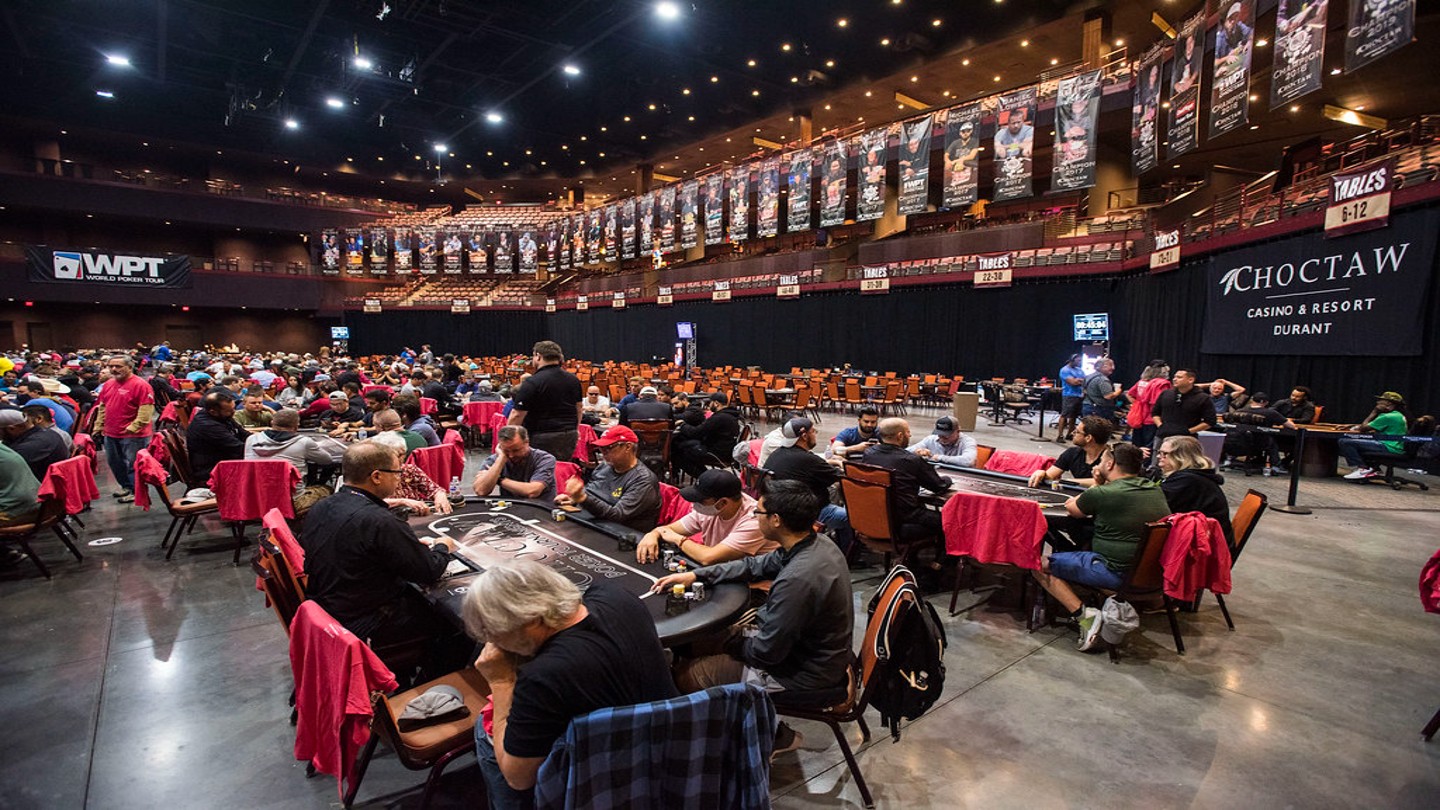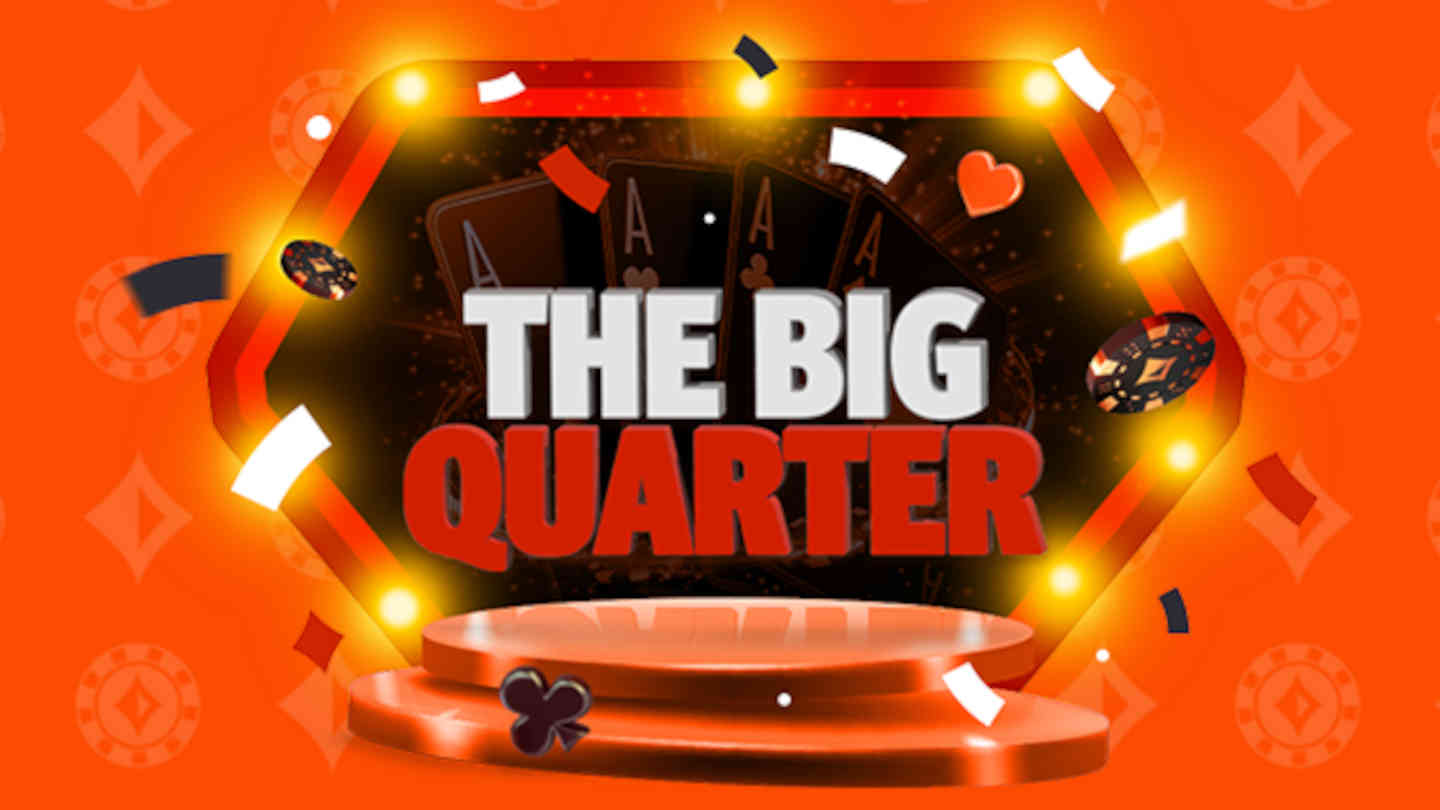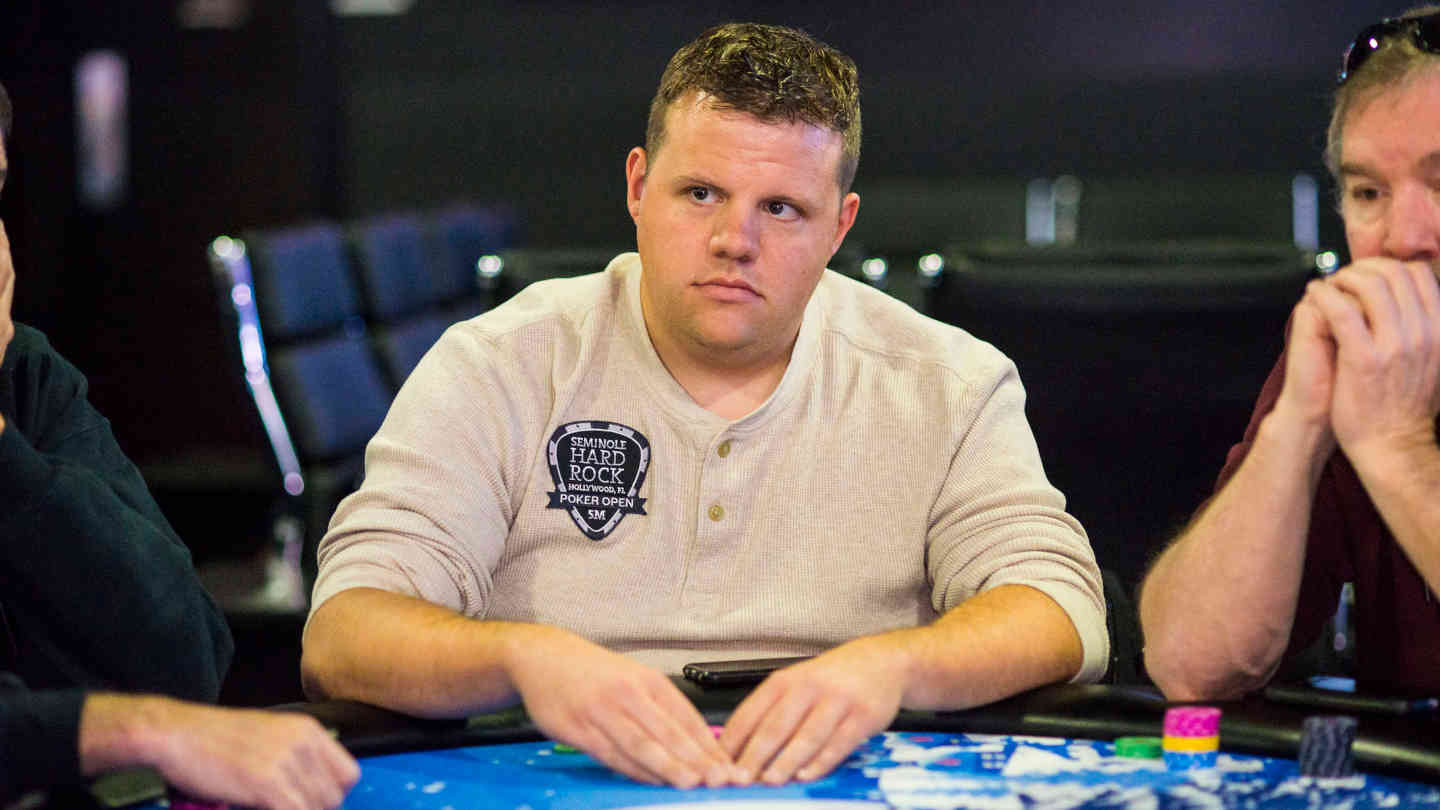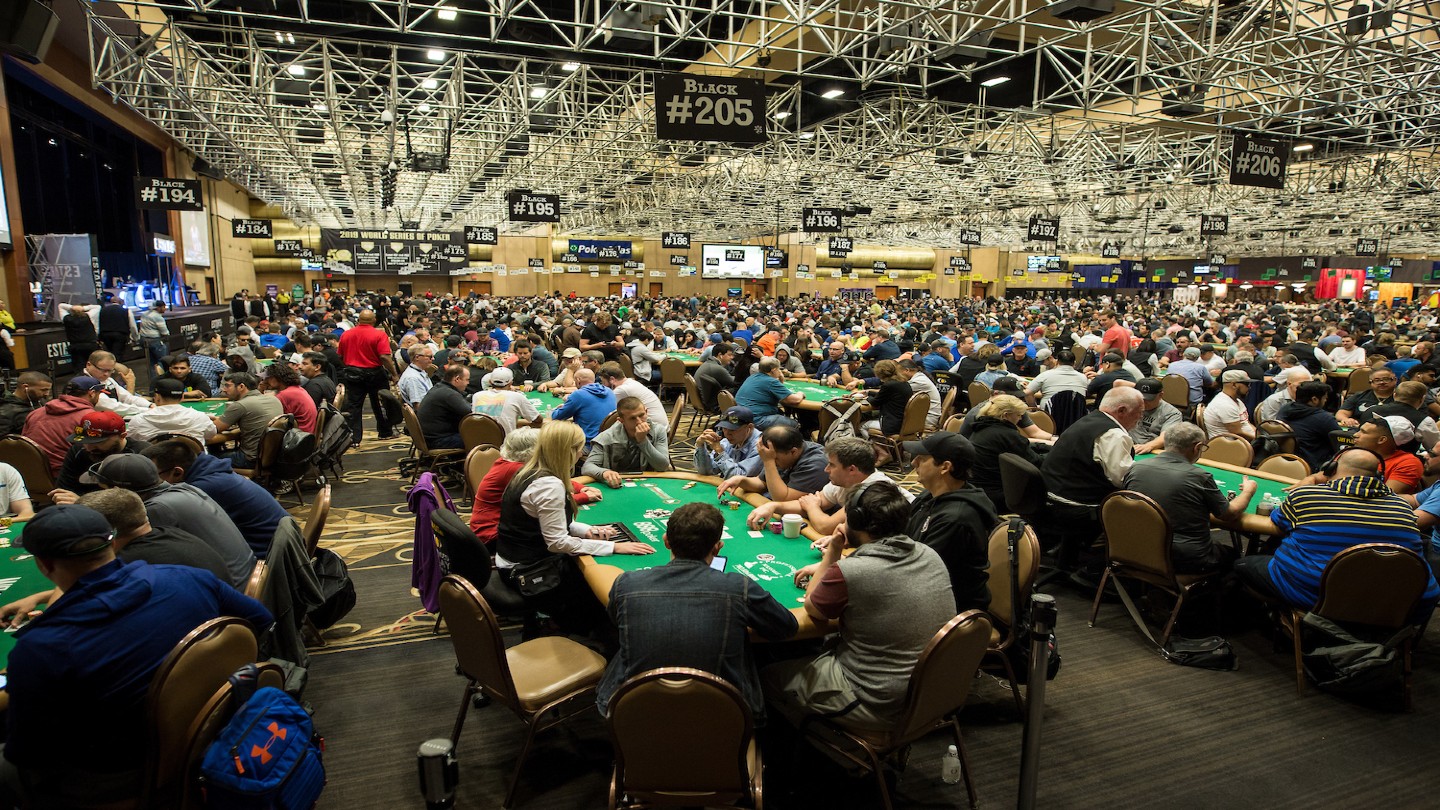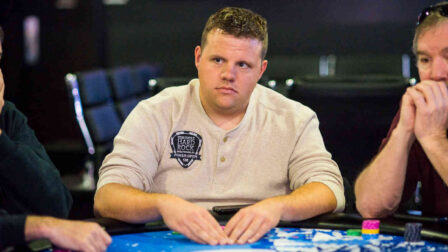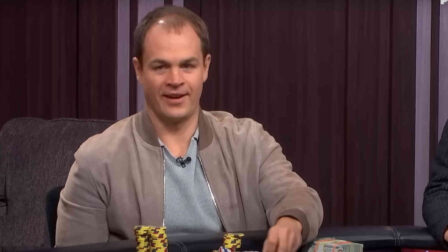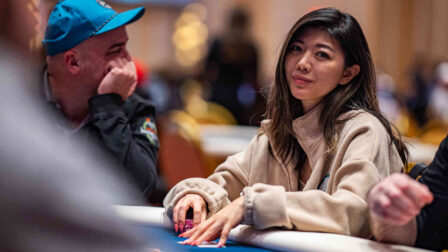How to Pick the Perfect Bet Sizing in Poker
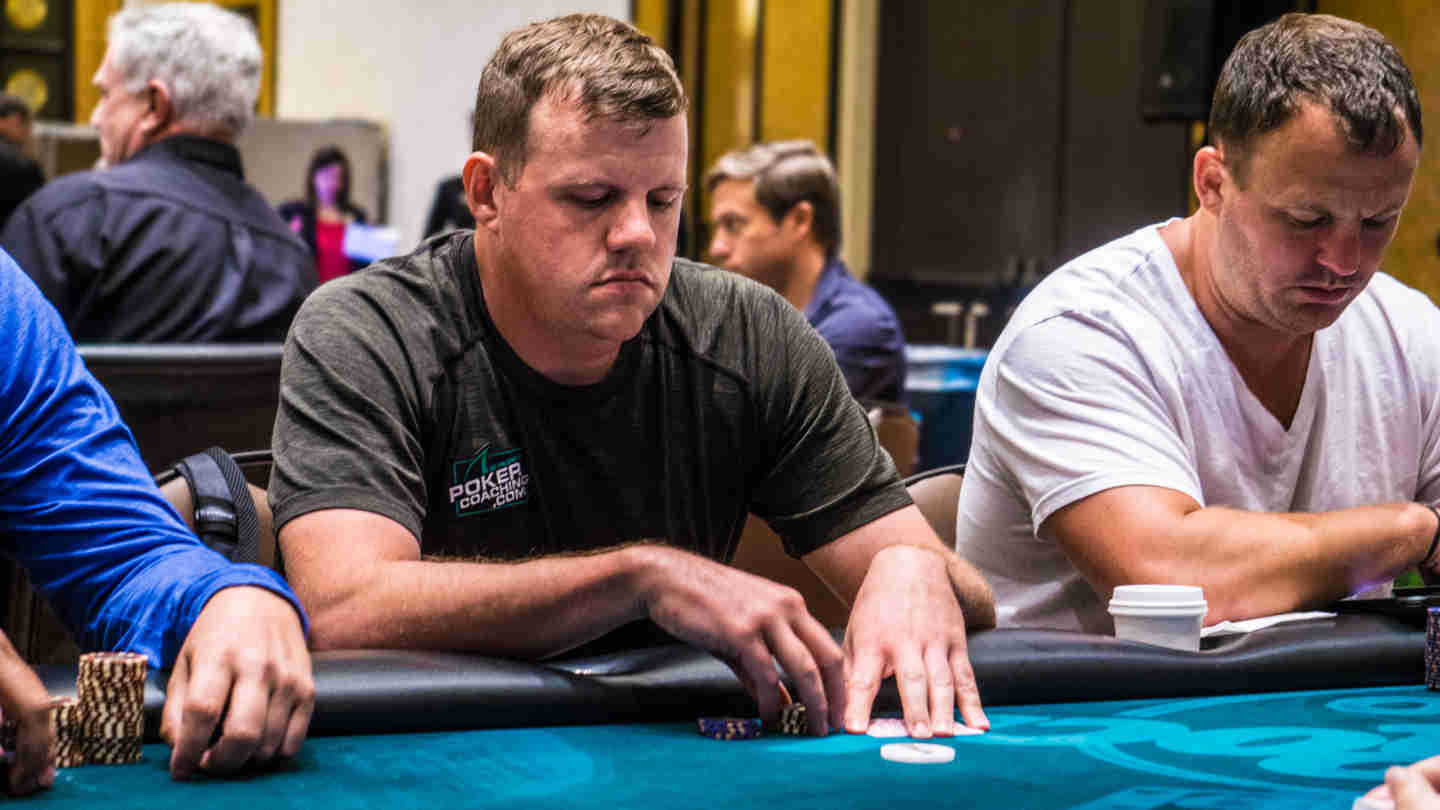
5 minutes
Last Updated: January 27, 2024
If you want to increase your edge at the tables even further, make sure to check the Pokercoaching training site.
…
One of the most common mistakes that people keep repeating has to do with bet sizing. When you’re in the early stages of a tournament, one of the quickest and most reliable ways to tell how good your opponents are is by paying attention to the bet sizes they choose.
How people change their bet sizes or use different (right or wrong) sizes on different textures is a very big sign of just how much someone has studied poker and how they think about the game.
I believe that one major thing that separates good regs from bad ones is the ability to size correctly in various spots. One good example of this that I’ve witnessed during last year’s WSOP is the wrong use of overbets.
People know that they should be over-betting in certain spots, so they do it, but quite often, they pick completely wrong situations for it. So, in this article, I’ll try to provide a framework of how to think while actually playing and choose your sizing correctly.
–
Small vs. Big Game
When figuring out our bet sizing strategy, we can boil things down to answers to two main questions:
- Who wins the small game?
- Who wins the big game?
The term small game refers to players with low equity poker hands, i.e., hands that are often referred to as “air.” They have little to no showdown value, which means that small game winners can bet more frequently, using small sizing, to fold out the air of their opponents.
By the same token, the big game refers to players who have high equity hands, and big game winners can use a bigger bet sizing.
It’s important to note that when talking about high and low equity, I’m talking about different types of hands, depending on the board texture. You don’t necessarily have to have the nuts to have a high equity hand in the context of bet sizing.
The situations in which you get to bet big are those where there is a gap between the amount of high equity hands one player holds in relation to the other. If this gap doesn’t exist (i.e., both players can have high equity hands, these large bets tend to go away).
It is possible to win both games but to achieve this, you’ll need to use a split strategy, mixing in some big and small bets, as the situation requires.
Bet Sizing Examples
In the video above, you’ll find several examples of what I’m talking about, but in this article, I’ll break down one of those examples.
Let’s look at a button vs. big blind scenario on three different board textures to try and figure out which ones prefer different sizings, and why.
KT2 Flop – Small Sizing
On a flop of KJ2, the big blind has a lot more air, while we have a lot of hands with good equity, whether they’re made hands or contain overcards that can turn into top pairs, straight draws, etc.
So, with that in mind, why do we go with small instead of big sizing? The biggest reason is the top pair, i.e., it’s very easy for the big blind to have a decent top pair here. So, the only hands that we really want to bet big with here are AK and KQ.
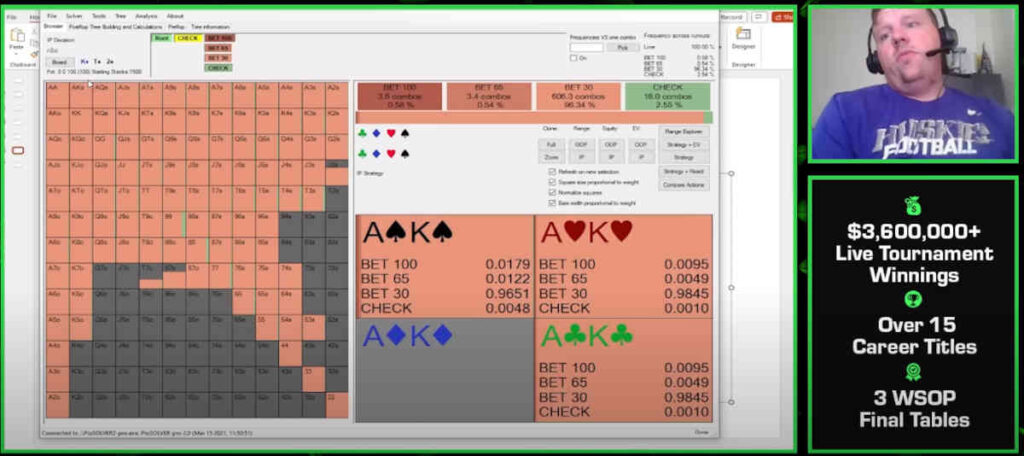
In these spots, the decision on the bet sizing will often be determined by who has the top pair advantage and the overpair advantage. Here, the only overpair we can have is pocket aces, and the big blind can realistically have strong top-pair hands like KQ and KJ.
In a nutshell, we’re not winning the big game that often here, so by betting bigger, you’d be narrowing their range to stronger hands.
Looking at the solver ranges, against a small bet (30 into 100), they are folding over 44% of the time, and with this sizing, we only need our bet to work about 23% of the time.
742 Flop – Big Sizing
Moving onto a different flop of 742, what is the main difference between these two textures? This is a scenario in which both players, the big blind and the button, have a lot of air in their range.
Given that both players will miss this board a lot, it is the overpair advantage that drives the betting here. We have all the overpairs that the big blind doesn’t have.
The button strategy will be a mix of betting large and checking behind. We check almost 50% of the time simply because we have too much air in this spot. About 44%, though, we’ll be betting big, and when I say big, I mean over-betting the pot (120%).
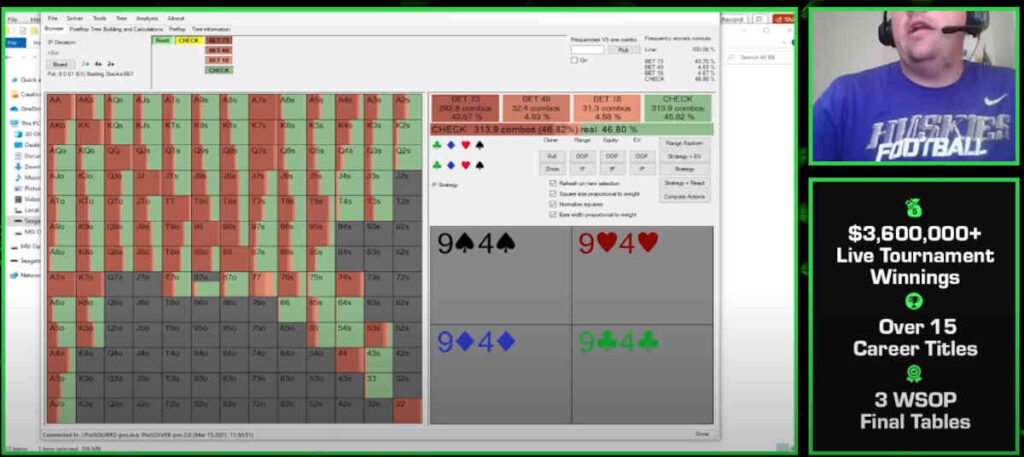
When we do bet big and get called, the most common hands our opponent will have will be hands containing a 7 or a 4. So, in addition to our overpairs and sets, we want to be betting big with hands that have a reasonable amount of equity against a hand like a pair of 7s.
To sum it up, we bet big frequently on this board because both players lose in the small game. A lot of people make the mistake of betting small (like 25% of the pot) on this flop, missing out on the opportunity to get money into the pot when they have a hand like pocket Jacks.
Summary
Bet sizing is a big topic that you can’t squeeze into an article or a one-hour video, but I suggest you check out the video lesson as well for some more board examples covering differences between the big and the small game.
The bottom line is this is one area in which many players, even regs, are lacking. By expanding your knowledge on bet sizing and how to make proper adjustments considering the board texture and player positions, you’ll manage to break away from the pack!







